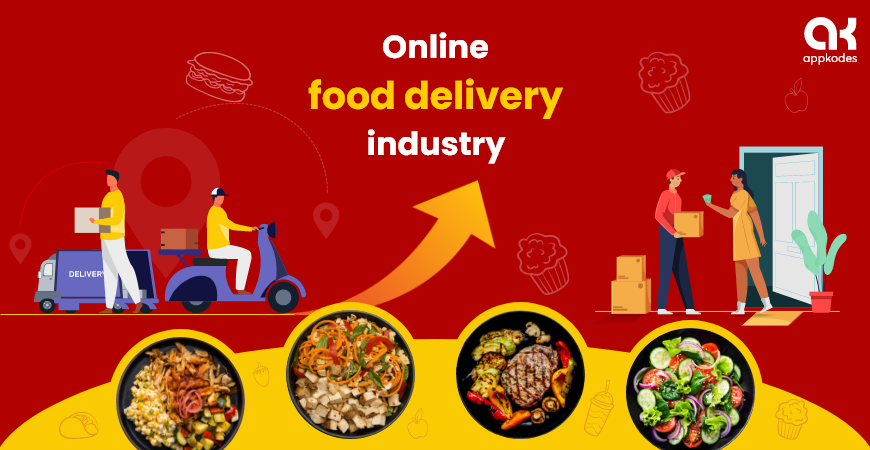
“Don’t put all your eggs in one basket” – especially if you haven’t checked whether the basket is worth carrying.
That saying rings especially true for aspiring entrepreneurs and businesses eager to enter the food delivery app space. With apps like Uber Eats, DoorDash, and Zomato changing how people order meals, the food app market looks like a goldmine – but is it really?
Before pouring your hard-earned capital into a new app, you need to ask: is your food app idea profitable?
Let’s explore how to find out – using solid metrics, market wisdom, and real strategies.
Suppose you’re serious about building a successful app. In that case, it’s worth checking out Appkodes, a trusted food delivery app development company known for delivering customized, scalable, and market-ready solutions that help entrepreneurs bring their food delivery vision to life.
The Rise of Food Delivery Apps: A Market Snapshot
Before diving into profitability, let’s understand the demand:
- The global food delivery app market is projected to reach over $320 billion by 2029.
- The average user spends $35 to $50 monthly on food delivery.
- Markets like the U.S., India, and Southeast Asia are still seeing aggressive growth.
These stats show a hungry market – but competition is fierce. So how do you make sure your idea doesn’t flop?
1. Know Your Audience: Who Are You Feeding?
Profitability begins with knowing who will use your app. Start by asking:
- Are you targeting budget-conscious students?
- Busy urban professionals?
- Families ordering dinner together?
You can’t serve everyone at once – pick a niche. For example:
- Vegan meal delivery
- Ethnic cuisine specials (Korean, Lebanese, etc.)
- Local home-chefs and cloud kitchens
Identifying the right audience helps refine your app’s features, design, and value proposition.
2. Validate the Problem You’re Solving
Every profitable app solves a real problem. Think of:
- “I hate waiting 60 mins for food”
- “I want only healthy meals”
- “Restaurants near me don’t deliver”
Ask these:
- Is the problem recurring or occasional?
- Are people willing to pay for the solution?
- Are there existing solutions that don’t work well?
You can use surveys, Reddit forums, or local interviews to dig deeper. This is your starting point before writing a single line of code.
3. Study the Competition
Never build in the dark. Analyze:
- Their strengths: Do they have a smooth UI? Great rewards?
- Their weaknesses: Are their delivery times poor? Is customer support lacking?
- Reviews: What are users complaining about?
Use this insight to differentiate your food app. Maybe you offer 20-min guaranteed deliveries, no-contact options, or support for small vendors.
4. Business Model Breakdown: How Will You Make Money?
There are multiple monetization options:
- Delivery Fees: Charge customers a flat or dynamic delivery fee.
- Subscription Plans: Offer free deliveries or discounts to members.
- Commission from Restaurants: Take 10-30% per order.
- In-app Ads: Partner with restaurants or brands.
- Surge Pricing: Adjust fees based on time/location.
Make sure your pricing model is fair and scalable. Look for what works in your region. A food delivery app development company like Appkodes can help you tailor models to your market.
5. Essential Features That Impact Profitability
Here are must-haves:
- Real-time order tracking
- Advanced search & filters
- Multiple payment options
- Rating and reviews
- Loyalty programs & promo codes
- Push notifications
These features not only improve UX but keep users coming back, increasing customer lifetime value (CLV).
6. Technical Costs: Budget vs Reality
Cost depends on:
- Number of features
- Design complexity
- Platforms (iOS, Android, Web)
- Backend integrations (GPS, APIs)
Expect these:
- MVP (basic version): $15,000 – $35,000
- Fully-featured: $50,000 and above
- Maintenance & scaling: 15-20% of total yearly cost
Tip: Save on costs with ready-made solutions like Appkodes’ customizable scripts instead of building from scratch.
7. Marketing: Profit Lies in Visibility
Even the best apps fail if no one sees them. Marketing is key to profitability.
Your channels:
- SEO & Content: Build blogs on local food trends.
- Influencer Marketing: Partner with food bloggers.
- Paid Ads: Google & Facebook.
- Referral Programs: Reward users for sharing.
- Email Campaigns: Re-engage existing users.
Allocate at least 20-30% of your initial budget for marketing.
8. Retention: The Real Profits Are Long-Term
Acquiring users is costly. Retaining them is cheaper and more profitable.
Boost retention with:
- Gamified loyalty programs
- Scheduled meal plans
- Daily deals and limited offers
- Excellent customer support
Make customers feel they’re part of something valuable and reliable.
9. Data & Metrics to Track Profitability
These help you measure viability:
- CAC (Customer Acquisition Cost)
- LTV (Lifetime Value)
- Order frequency
- Churn rate
- Average basket size
If LTV > CAC, your app is on the path to profit.
10. Hidden Pitfalls to Avoid
- Overengineering early features: Focus on MVP.
- No scalability planning: Think long-term.
- Ignoring local regulations: Food safety, tax compliance, etc.
- Underestimating logistics: Delivery tracking and efficiency matter.
Learn from failed apps and don’t repeat mistakes.
Final Thoughts: Is It Worth It?
Food apps can be highly profitable if built with strategy, niche focus, proper budgeting, and long-term engagement in mind.
Test the waters before diving in. Create surveys, build an MVP, gather real feedback, and optimize based on real use.
And if you want to build smartly without burning through your funds or time, choosing a proven food delivery app development company like Appkodes can make all the difference.
Remember, cooking up profits in the food app world is not about having the most ingredients – it’s about having the right recipe.



